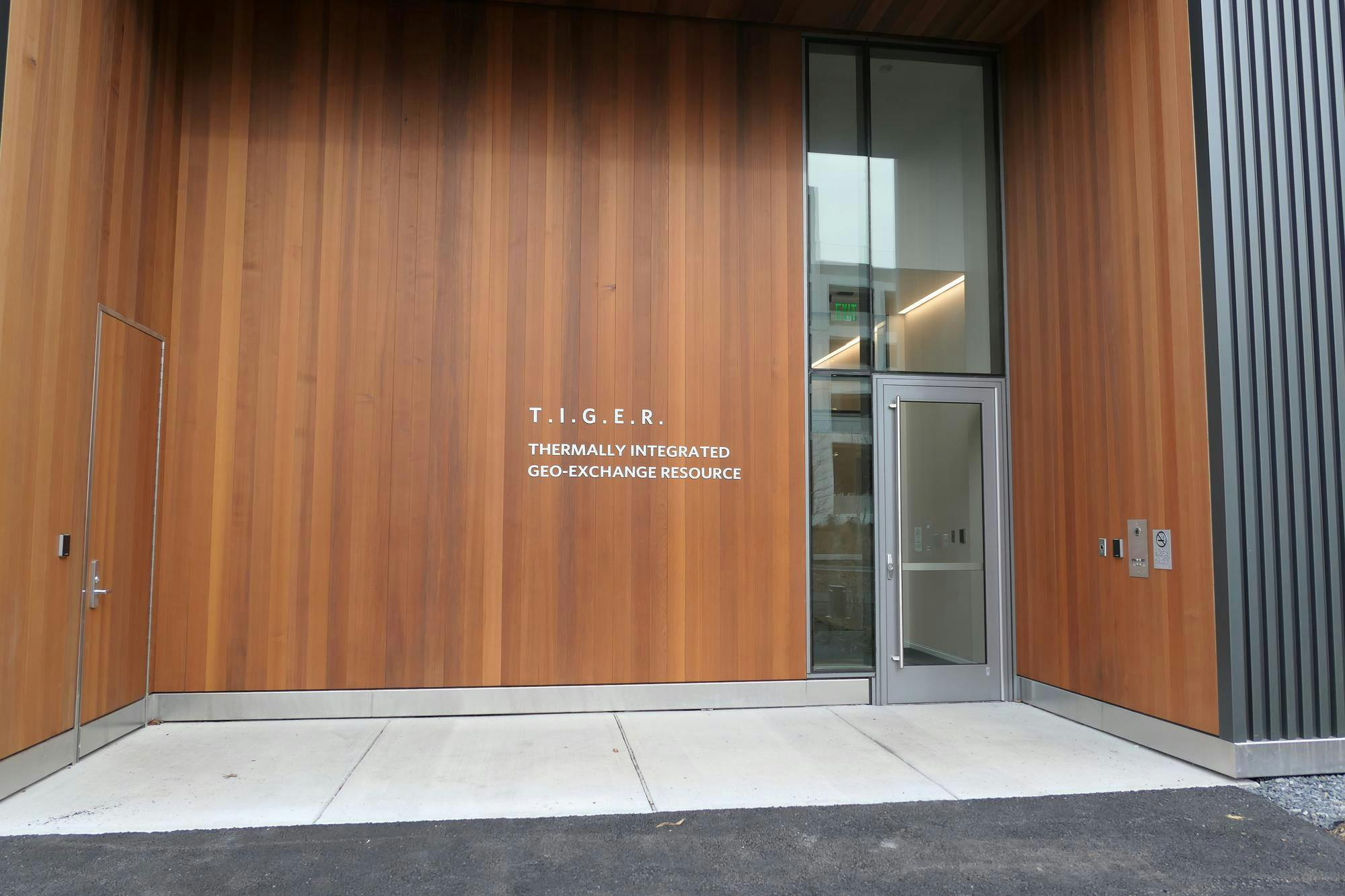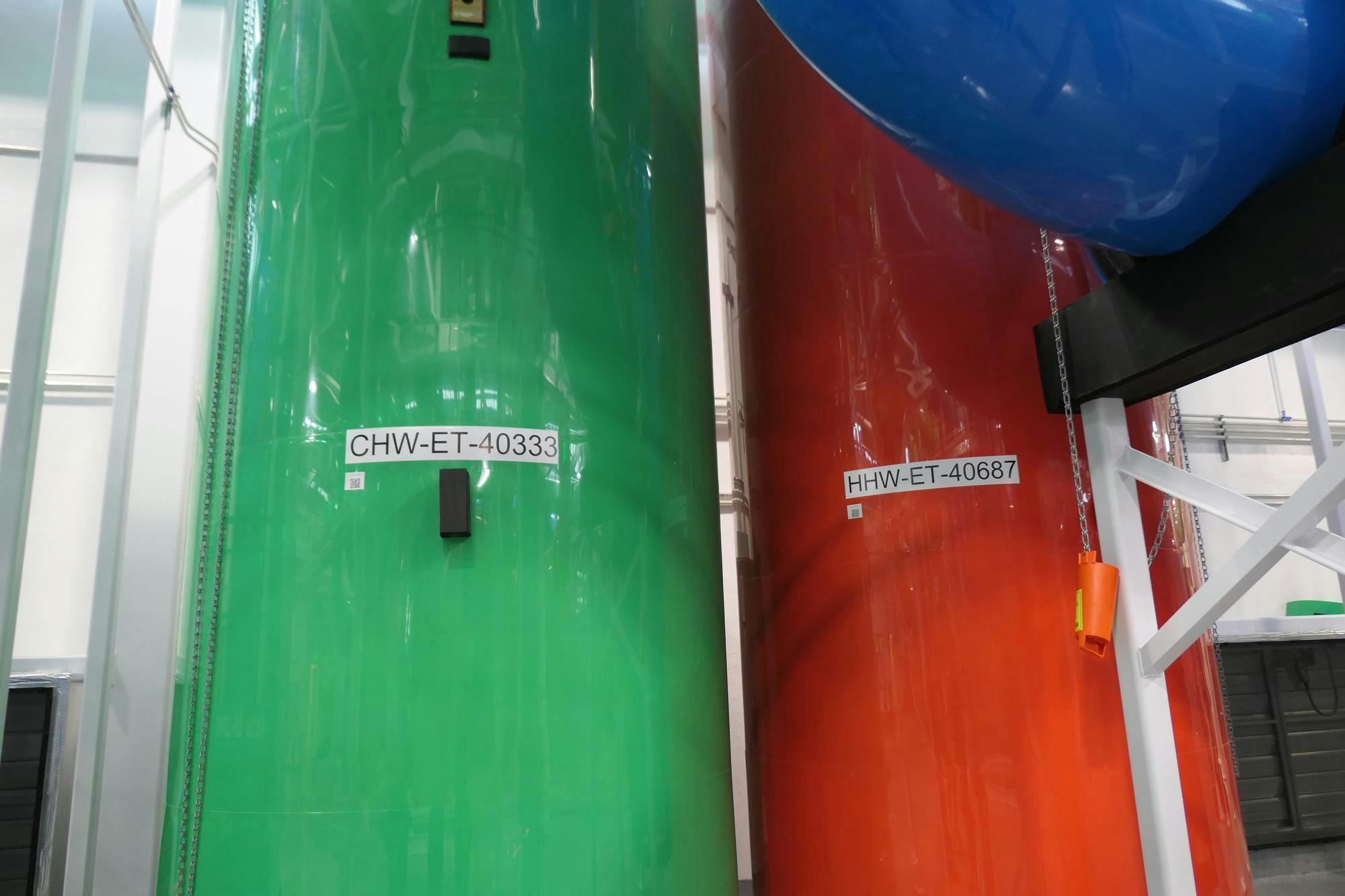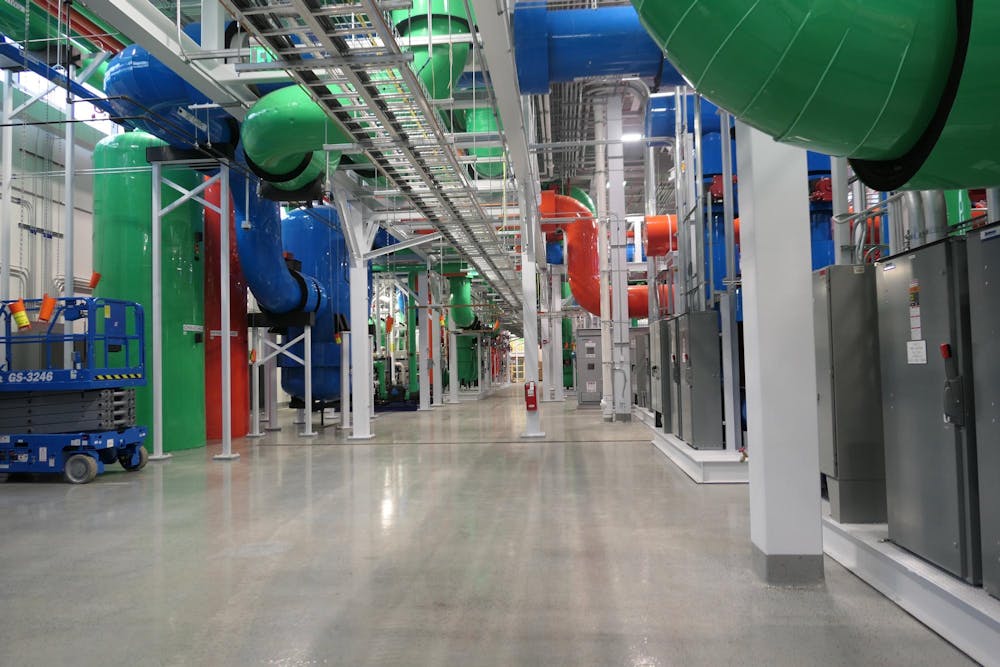When I toured the West Energy Plant last year, Energy Plant Manager Ted Borer promised that he’d show me the new energy plant when it was complete. Borer stayed true to his word, and just over a year later, I found myself striding past Prospect St. and down Broadmead St. on a chilly February afternoon to see the building for the first time.
After greeting me at the door, which was surrounded by wood paneling and emblazoned with the name “T.I.G.E.R.” in bold white lettering, Borer and his colleague Saurabhi Mishra led me down a hallway to a bright conference room. Borer noted that this room was a space specifically meant for conversations like ours.
For the first time in history, Princeton is producing a portion of its energy more efficiently than before and sometimes without the combustion of natural gas. This feat is made possible with the help of pipes 70 stories deep, two thermal energy storage tanks that can hold around 4.5 Olympic-sized swimming pools each, and TIGER, the affectionately dubbed and recently constructed Thermally Integrated Geo-Exchange Resource building.
“I can’t tell you how many times already people have come for talks and presentations,” he said.
According to Borer, some U.S. government agencies have already expressed interest in visiting the plant, and this past January, Princeton’s campus caught the attention of the New York Times.
Entering the building, we took our seats at either end of a long table as Borer allowed me to question him for over an hour about what had changed since our interview last year. As it turned out, there were many developments to catch up on.

My first view of T.I.G.E.R. from the front.
Raphaela Gold / The Daily Princetonian
Over the past year, the team has continued to install geo-exchange bores across campus, under East Garage, Hobson College, Meadows Softball Field, Poe Field, Roberts Stadium, and Whitman Lawn. The bores are about six inches in diameter and 850 feet deep.
“That’s equivalent to a 70 story building,” said Borer, comparing the length to 30 Rockefeller Center in New York. “It’s just a really deep hole.”
Each hole houses HDPE vertical piping which doubles back on itself at the bottom to create two parallel pipes. These act as the arteries of the geo-exchange circulatory system. So far, about 1000 bores have been installed. By 2033, Borer expects that they will total 2000.
Through these bores flows water which circulates through larger pipes in the TIGER facility. We would take a closer look at these pipes later in the tour, but first, Borer took me into the control room and introduced me to Dave Sousa, the plant operator.
Sousa was watching the temperature cursors on a screen to maintain the proper levels of cold and hot water. He explained the information he was seeing on the screen in real time. “He’s thinking about reliability … making sure students get what they need,” explained Borer.

The system operates as a thermal piggy bank. In the summer, the system draws heat from buildings into water, which is sent underground through piping to gradually warm subterranean rock. When the weather gets cold, the system pumps the heated water up through pipes to warm the buildings once more.
Although the system heats and cools the ground on an annual cycle, Princeton has a continuous need for both heating and cooling year-round, regardless of outside temperature. Even on the coldest day of February, the University extracts heat released from lasers, electron microscopes, CT scan machines, and computer facilities. Likewise, stored heat must be delivered for activities like handwashing, showering, and dishwashing despite the warmth of August weather.
In other words, plant operators like Sousa must balance satisfying the campus’ immediate needs and heating the daily thermal storage tank. Anything left over is stored in the seasonal system.
The control panel provides Sousa with the information on the automated process; though, he also occasionally needs to step in and change something.

Energy Plant Manager Ted Borer explains the screens in the control room.
Raphaela Gold / Daily Princetonian
After chatting with Sousa, we were finally ready to see the pipes in the equipment room. The conference room had been quiet, but as we neared the heart of the facility, the steady whirring of machinery crescendoed, and I noticed a faint rubbery scent. If I hadn’t known better, I would have assumed I was gazing upon an indoor waterpark full of twisting, vibrantly colored slides.
Borer explained the plant’s simple color coding system as I soaked it all in. The green pipes contain chilled water going out to campus and back. The blue pipes are going down to the geo-exchange field and back. Finally, the orange pipes carry hot water out to campus and back.
Each pipe is marked with a sticker bearing a “secret code,” with abbreviations and numbers that the plant staff can understand.
At one point, Borer asked me to feel the metal attached to a pipe. The pipe is insulated, but a bit of heat escapes. Because there is always some hot water going through the system, it was warm to the touch — probably 105 or 110 degrees, Borer estimated.
Borer explained that the water going through the pipes also travels through daily thermal storage tanks, which are located outside, adjacent to TIGER. Each tank holds 2.2 million gallons of water. This water serves as energy storage media, meaning that the water is heated and cooled, but not gained or lost. “It’s a closed system. That is important,” Borer noted.

Water pipes labeled with the plant's secret code.
Raphaela Gold / The Daily Princetonian
Borer pointed out an air-dirt separator pointing into a drain in the floor, which filters debris particles out of the water and pumps any solids through the drain out of the plant. It looked like a wide vacuum, but one which ejects particles outwards rather than sucking them in.
If any of this equipment breaks or needs repair, the plant staff can open the glass walls, manufactured with built in fritting to protect against bird collisions, so that a new piece of equipment can easily be installed, while the old one is removed.
Borer noted that it was difficult to source many of these materials, as the geo-exchange technology is so new. The facilities team looked “all over the world and certainly all over the country for the right things and the right skill sets to install them. It’s not like [they] just went to Home Depot,” said Borer.
Additionally, acquiring the materials was expensive. Though he couldn’t tell me exactly how much, Borer confirmed that the combined systems cost hundreds of millions of dollars, and it is as of now unclear how much of that will be incentivized by the Biden administration’s Inflation Reduction Act (IRA). The University is still working with outside counsel and tax advisors on what they can and can’t claim under the IRA. According to Borer, the cost could swing 30–40 percent based on the answers to those questions.
The geo-exchange installation continues despite these challenges, and, even after it is fully in use, the University will continue to maintain its cogeneration plant. The two plants will ultimately operate in tandem.
In the past, the cogeneration plant has played a crucial role during severe weather events, allowing the University to continue operating even when the regional power grid failed. “Because we had on-site cogeneration, we were able to be a place of refuge to the community,” Borer explained. He added that because of climate change, the University needs to be prepared for more storms in the future.
This might involve buying generators that run on diesel, one of the most polluting forms of fuel. Therefore, though Borer knows that the University needs on-site, controllable power generation, he hopes to run it as infrequently as possible. “If I run the diesel generator or something like that 100 hours a year, it will save us money, and then I can have it during the next horrendous weather event,” he explained.
One significant difference between the cogeneration plant and TIGER is a shift in architectural ethos. While the cogeneration is housed in an unassuming “concrete block and metal siding,” the University wanted TIGER to stand out aesthetically to mark the importance of what it housed. Borer remembers working in a Philadelphia power plant that was built in the 1920s. He recalls soaring windows that let in the light, mahogany railings, and a restaurant up over the turbine hall floor where you could see power for a whole city being generated.
“It was exciting back then,” Borer explained. “So now we have this new and novel and exciting and dynamic thing, and we wanted people to look at it and say: look how impressive this thing is and to learn what best practices in energy look like.”

The exterior of the building is designed with tall glass windows so that visitors can have a view of the colorful equipment within.
Raphaela Gold / Daily Princetonian
Although the system is still far from complete, many buildings are already running on the district hot water system, including New College West, Yeh College, Bloomberg Hall in Butler, Princeton Neuroscience Institute, Thomas Laboratory, Carl Icahn Laboratory, Jadwin Gym, and Caldwell House. A part of Dillon Gym is also connected, and soon, the Art Museum will be as well.
Though the first month’s report has not yet been published, Borer reported that the plant’s performance “looks amazing.” When Borer predicted what the plant’s coefficient of performance would be last year, he expected it would be around four. Right now, according to Borer, it’s measuring between 4.5–5.
“That means we’re delivering to this campus 4.5 times the energy we’re putting into the plant,” Borer explained. He expects the plant will do even better this summer, adding, “I cannot dream of seven, but it might be as high as six. Come back and ask me!”
Though Borer enjoys the aesthetic of the plant and spending time in the new TIGER, his favorite part of his job is looking at spreadsheets. “I’m such a nerd,” he joked, then explained “This is not theoretical, this is not a research project. We can do this on a community scale. We can do this for 15,000 people. What I want to do now is show that this is also financially attractive.” Borer's spreadsheets help him work towards the goal.
Borer is intent on sharing this technology and its possibilities outside of Princeton. “We can fix Princeton,” he said. “But what I want to do, and what many of us want to do, is make a bigger impact.” He hopes that in the future, Princeton can help peer institutions learn how to “walk this path.”
As the tour came to a close, we took a moment to step back and look around the equipment room one last time. The machinery was still gently whirring, and a green light glowed at the top of a four-light system, indicating that all was well, and the plant was safe.
When Borer reflects on the progress the team has made, he said that he feels very proud. He emphasized that the project was a team effort, involving hundreds of people, and to see it finally performing well is “super exciting.”
He added, “The bigger context is we’re trying to get Princeton to carbon neutrality, and we’re trying to get others to carbon neutrality. This is showing: ‘Yeah, you can do that.’”
Raphaela Gold is the associate Features editor and a head Archives editor.
Please direct any corrections requests to corrections[at]dailyprincetonian.com.





